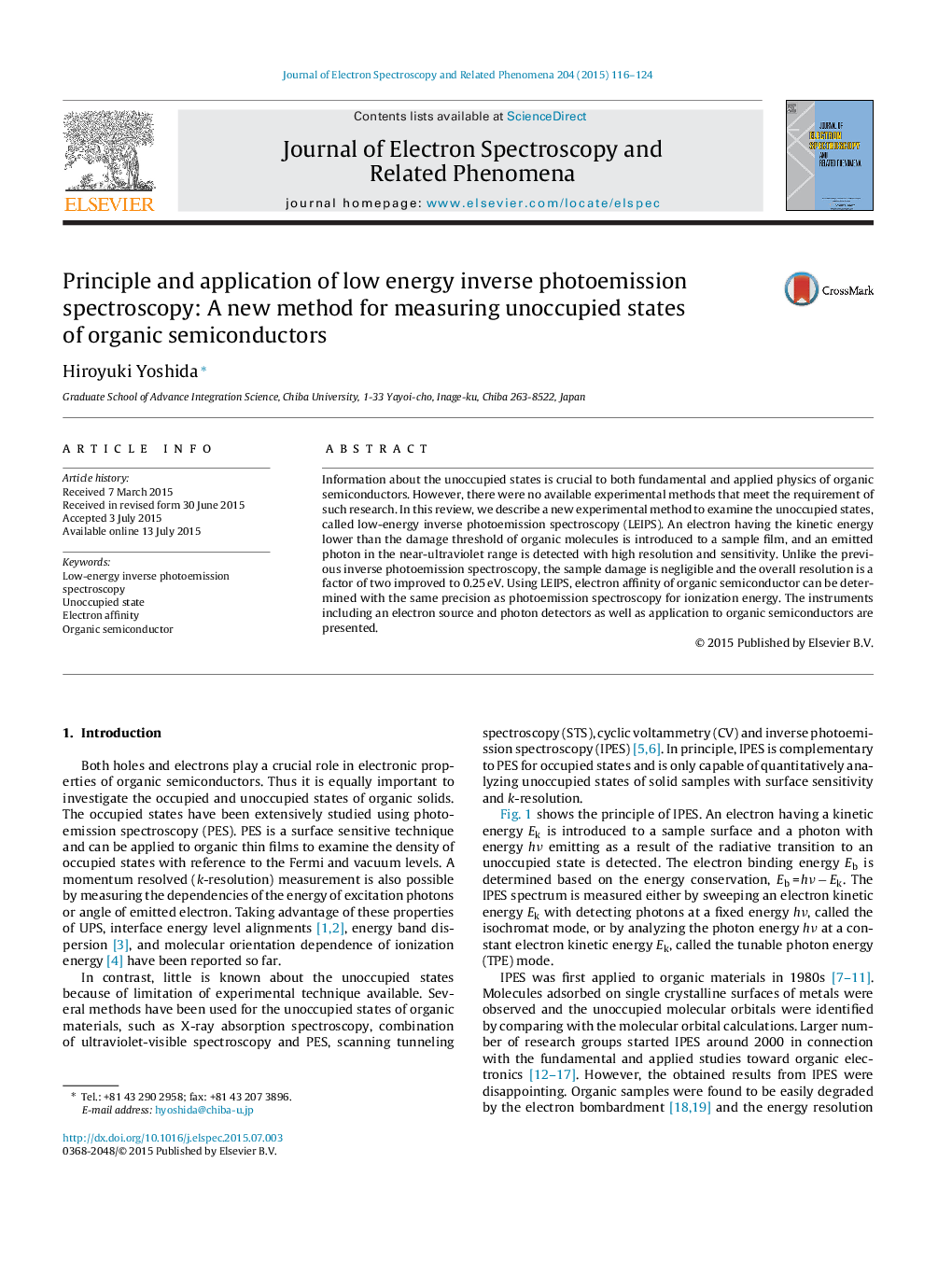| Article ID | Journal | Published Year | Pages | File Type |
|---|---|---|---|---|
| 5395602 | Journal of Electron Spectroscopy and Related Phenomena | 2015 | 9 Pages |
Abstract
Information about the unoccupied states is crucial to both fundamental and applied physics of organic semiconductors. However, there were no available experimental methods that meet the requirement of such research. In this review, we describe a new experimental method to examine the unoccupied states, called low-energy inverse photoemission spectroscopy (LEIPS). An electron having the kinetic energy lower than the damage threshold of organic molecules is introduced to a sample film, and an emitted photon in the near-ultraviolet range is detected with high resolution and sensitivity. Unlike the previous inverse photoemission spectroscopy, the sample damage is negligible and the overall resolution is a factor of two improved to 0.25Â eV. Using LEIPS, electron affinity of organic semiconductor can be determined with the same precision as photoemission spectroscopy for ionization energy. The instruments including an electron source and photon detectors as well as application to organic semiconductors are presented.
Related Topics
Physical Sciences and Engineering
Chemistry
Physical and Theoretical Chemistry
Authors
Hiroyuki Yoshida,
